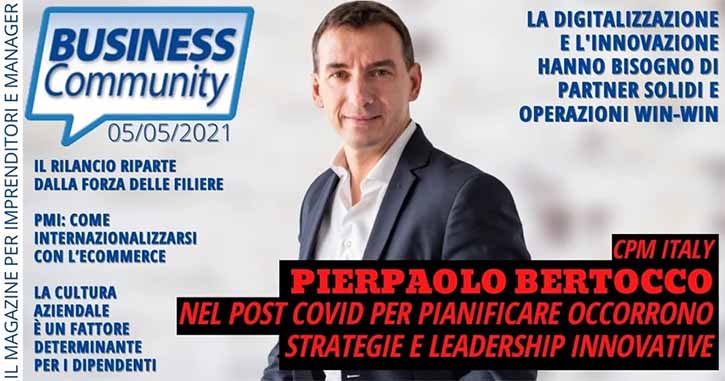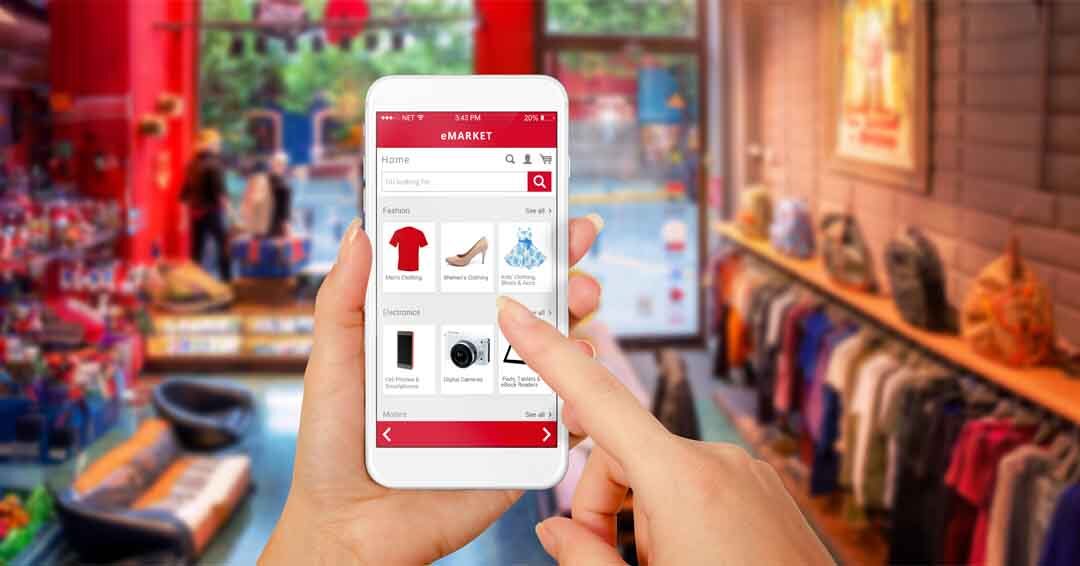
Outsourcing business model
Embracing a business model based on sales outsourcing means taking a new direction that leads to greater agility and flexibility, as well as budget optimisation
More and more companies are becoming interested in scalable business models, often based on outsourcing functions that had previously seemed to be an inherent part of the business, such as sales. Outsourcing sales delivers savings in resources and costs, as well as greater reactivity to market demand, giving a competitive edge and reducing risk. We talked about it with Pierpaolo Bertocco, Managing Director at CPM Italy.
Planning in an uncertain future. What are the possible strategies for brands?
Every brand has to deal with an uncertain future, as well as with the constant changes in consumer expectations. During the pandemic these have changed more than ever, often turning into anxiety and worry. Predicting consumer trends and, in general, market performance and potential risks is an exercise that requires different strategies and leadership to those it did a year ago.
Old-style planning no longer works. We need to move away from established routines towards planning that incorporates risks which, up until now, seemed to be so remote that they were simply not worth considering. This means abandoning the just-in-time approach adopted thus far to reduce costs and streamline processes by making them waste-free, and instead plan for the unknown more carefully and precisely in the new just-in-case model.
However, the complexity the pandemic brought with it does not only involve anticipating risks, but also defining the costs necessary for tackling them. This is the need that exposed the weaknesses of the just-in-time model, based on extremely accurate predictions of costs and resources, which today are difficult to plan even in the short term.
As a consequence, implementing the Sales Route to Market should involve choosing business models that give greater scalability. The adoption of strategic sales outsourcing partnerships in fact supports the “just-in-case” approach.
The sales outsourcing function. Why can it offer a competitive edge?
Embracing a business model based on the strategic outsourcing of the salesforce means taking a new direction that leads to greater agility and flexibility, as well as budget optimisation. Based on more than 80 years of experience with both global brands and organisations operating in a domestic market, CPM has identified five reasons why a company should decide to enter into a sales outsourcing partnership: competencies, flexibility, focus, change and costs.
The first reason is related to the quality of resources offered by the outsourcer. The "Strategic Outsourcing" study recently published by CPM showed that 62% of companies use outsourcing to find talented resources. The outsourcer guarantees resources that are trained for a specific market, but also prepared to apply their competencies to incentivise the client brand's sales in a variety of merchandise categories and non-conventional circumstances. For example, to guarantee high skills levels at CPM, we invest 10% of revenues in training and development courses for our resources every year. The second reason is the flexibility with which the talent can be managed. This applies to many different situations, ranging from the current situation created by the pandemic to those typical of the retail world, such as seasonality, product launches, etc. Outsourcing sales means having a pool of talent available to take action where necessary, when necessary when change happens.
The third reason is that it leaves the company free to focus on its core business, growth strategies and priority internal functions, while the outsourcer focuses on sales. In addition to the field force, the outsourcer provides sales strategies and tools, as well as analyses to optimise time and exploit the time-to-market in the best possible way.
The speed of change is the fourth reason to outsource sales. While outsourcers are used to reacting quickly and in a focused manner to change, often organisations are influenced by internal priorities, which might be equally important, but can slow down the process.
Finally, costs. Sales outsourcing offers various commercial models at variable costs, based on performance targets, which deliver optimal financial control and ensure greater involvement in reaching the goals set.
In short, outsourcing the sales force means above all defining, managing and monitoring a direct link between costs and results, thanks to a strategic mix of directly employed resources and outsourced resources with a shared goal.
How is outsourcing integrated with internal competencies?
Integrating a strategic sales outsourcing partnership means having external teams ready to co-operate with functions within the company in order to improve the entire sales process. The study I quoted above found that 79% of sales managers agree that outsourcing sales has helped them reach their business targets more quickly.
Organisations can draw on and benefit from a mix of physical and digital resources that is constantly being updated, and at the same time access a consultancy service based on experience in the field with a range of different industries that would be impossible to achieve using internal resources. At CPM we ensure healthy cross-contamination between competencies and profitable exchange of data and insights, applying procedures governing ethics and accountability. This is how we support the proliferation of new ideas about sales techniques, the identification of various operational methods and the creation of cross-contamination between experiences. All of which translates into a competitive edge and reduces the risk for the client.
The pandemic has been a real boost to digital business. The boundary between online and offline sales has become far less marked. How does CPM operate in this context?
The drive to integrate sales channels has seen an acceleration that would normally have taken place over several years, making the retail world truly phygital, or hybrid. Retailers’ physical and online operations are far more interconnected than they were a year ago, but there is still a long way to go. The logic adopted for physical retail needs to be linked to that applied to online retail more effectively and efficiently. This means using analytical tools able to monitor e-commerce in the same way that the field force does for physical retail. CPM facilitates this step by offering two key pillars: people and technology. By investing in resources and digital skills to integrate the physical and online sales processes, we help clients reach their commercial goals and turn lost opportunities into additional sales.
Over the years we have developed a series of proprietary tools, customised to clients’ requirements, which meet a variety of needs. These include collecting insights and sales monitoring and management, not only of the physical but also of the digital channel. These tools have proved their full potential during the pandemic, helping clients to remain competitive. Our online sales platform *shopt, for example, integrates physical retail and e-commerce, driving sales.
Detail Online is our online merchandising platform. It monitors thousands of retailers and marketplaces on an ongoing basis, showing the status of sales, and quickly and accurately identify problems that can cause lost sales opportunities.


 2 minute read
2 minute read


